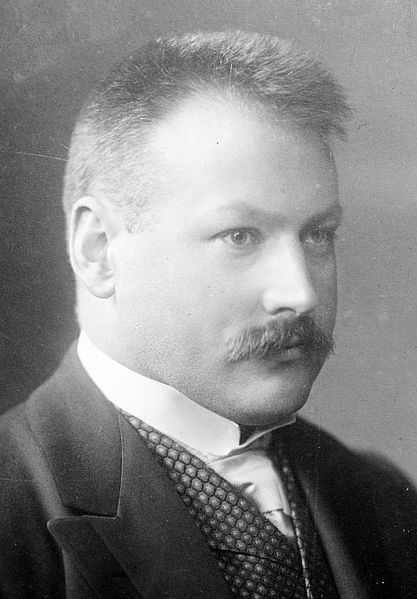<Back to Index>
- Biochemist Emil Abderhalden, 1877
- Composer Josef Mysliveček, 1737
- Tsar and Great Prince of All the Russias Aleksey Mikhailovich Romanov, 1629
PAGE SPONSOR

Emil Abderhalden (March 9, 1877 – August 5, 1950) was a Swiss biochemist and physiologist. His main findings, though disputed already in the 1920s, were not finally rejected until the late 1990s. Whether his misleading findings were based on fraud or simply the result of a lack of scientific rigor remains unclear. Abderhalden's drying pistol, used in chemistry, was first described by one of his students in a textbook Abderhalden edited.
Emil Abderhalden was born in Oberuzwil in the Canton of St. Gallen in Switzerland.
Abderhalden studied medicine at the University of Basel and received his doctorate in 1902. He then studied in the laboratory of Emil Fischer and worked at the University of Berlin. In 1911 he moved to the University of Halle and taught physiology in the medical school. From 1931 to 1950, he was president of the German Academy of Natural Scientists Leopoldina.
During World War I, he established a children's hospital and organized the removal of malnourished children to Switzerland. Subsequently, he resumed his research into physiological chemistry and began to study metabolism and food chemistry.
After World War II Abderhalden returned to Switzerland and got a position at the University of Zurich. He died there at age 73. Abderhalden is known for a blood test for pregnancy, a test for cystine in urine, and for explaining the Abderhalden – Kaufmann – Lignac syndrome, a recessive genetic condition. He did extensive work in the analysis of proteins, polypeptides, and enzymes. His Abwehrfermente ("defensive enzymes") theory stated that immunological challenge will induce production of proteases. This was seemingly "proven" by many collaborators in Europe, although attempts to verify the theory abroad failed. The pregnancy test was determined to be unreliable a few years after its inception. In late 1912 Abderhalden's "defensive ferments reaction test" was applied to the differential diagnosis of dementia praecox from
other mental diseases and from normals by Stuttgart psychiatrist August
Fauser (1856 – 1938), and his miraculous claims of success were soon
replicated by researchers in Germany and particularly in the United
States. However, despite the worldwide publicity this "blood test for
madness" generated, within a few years the "Abderhalden – Fauser
reaction" was discredited and only a handful of American psychiatric researchers continued to believe in it. Certainly
by 1920 the test was all but forgotten in the USA. Abderhalden's
reputation continued to grow in Germany, however, where collaborators
managed to "replicate" his results, usually by simply repeating
experiments until they succeeded and discarding the negative results.
As Abderhalden was seen as the founder of scientific biochemistry in
Germany, questioning his work could harm one's career, as Leonor Michaelis discovered
in the mid 1910s; by 1922, Michaelis' reputation was so tarnished that
he had to leave the country to embark on an outstanding career of
scientific success abroad. Otto Westphal later called Abderhalden's Abwehrfermente work "a fraud from beginning to end". Abderhalden's work was strongly ideologically slanted: his theory was put to use for human experiments by Otmar von Verschuer and Josef Mengele to develop a blood test for separating "Aryan"
from "non-Aryan" individuals. While Abderhalden himself did not take
part in this work, evidence suggests that he was instrumental in
ideologically streamlining the German Academy of Natural Scientists Leopoldina by having the Jewish members purged and replaced by Nazi sycophants. Despite
of his theories being rejected as early as the mid 1910s, Abderhalden
still loomed large as a kind of "father figure" in parts of the German
scientific community and only by Deichmann and Müller - Hill's
scathing 1998 review, the entire extent of the rejection was revealed. It must be noted, however, that in Abderhalden's days, the science of immunology was all but non - existent. That his experiments indeed seemed to "work" on occasion was probably due to immunoprecipitation. The crucial difference between this and Abderhalden's theory is that the former is an effect of antibodies, whereas the fictitious Abwehrfermente were presumed to be proteases; a difference that has large implications for biochemistry and immunology. The
most comprehensive analysis of the issue as to whether Abderhalden was
simply grossly mistaken or perpetuated deliberate fraud can be found in
Kaasch's work.